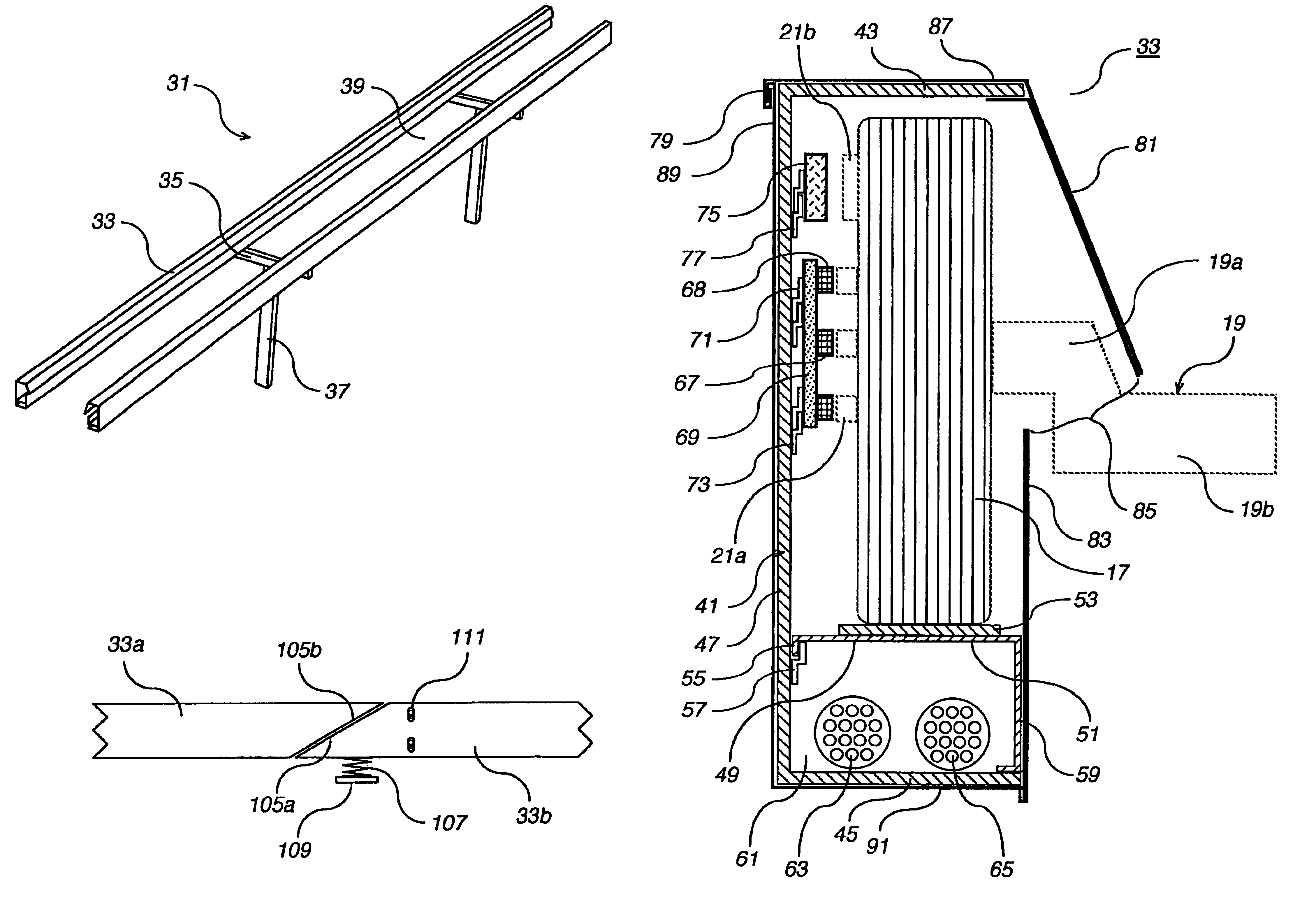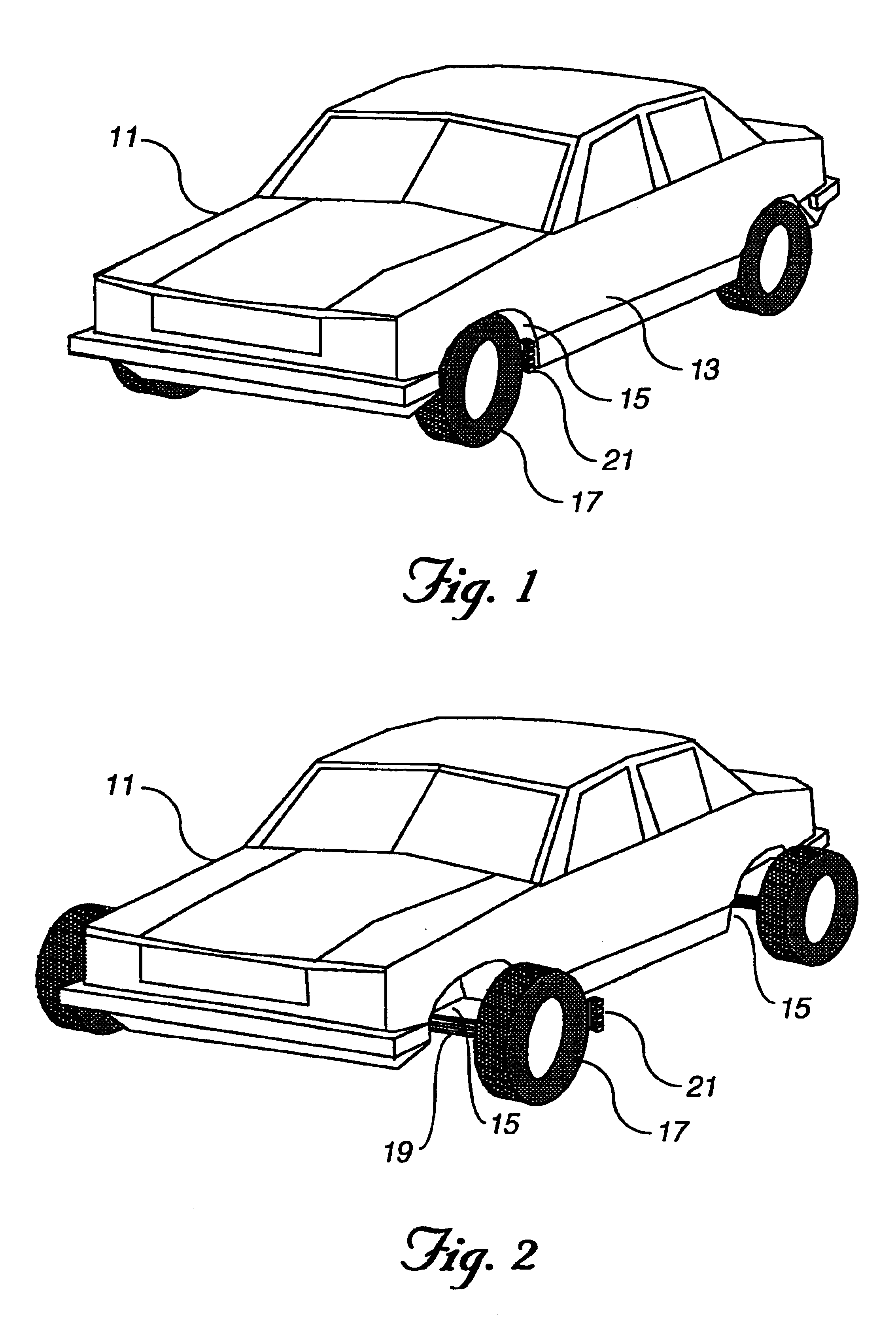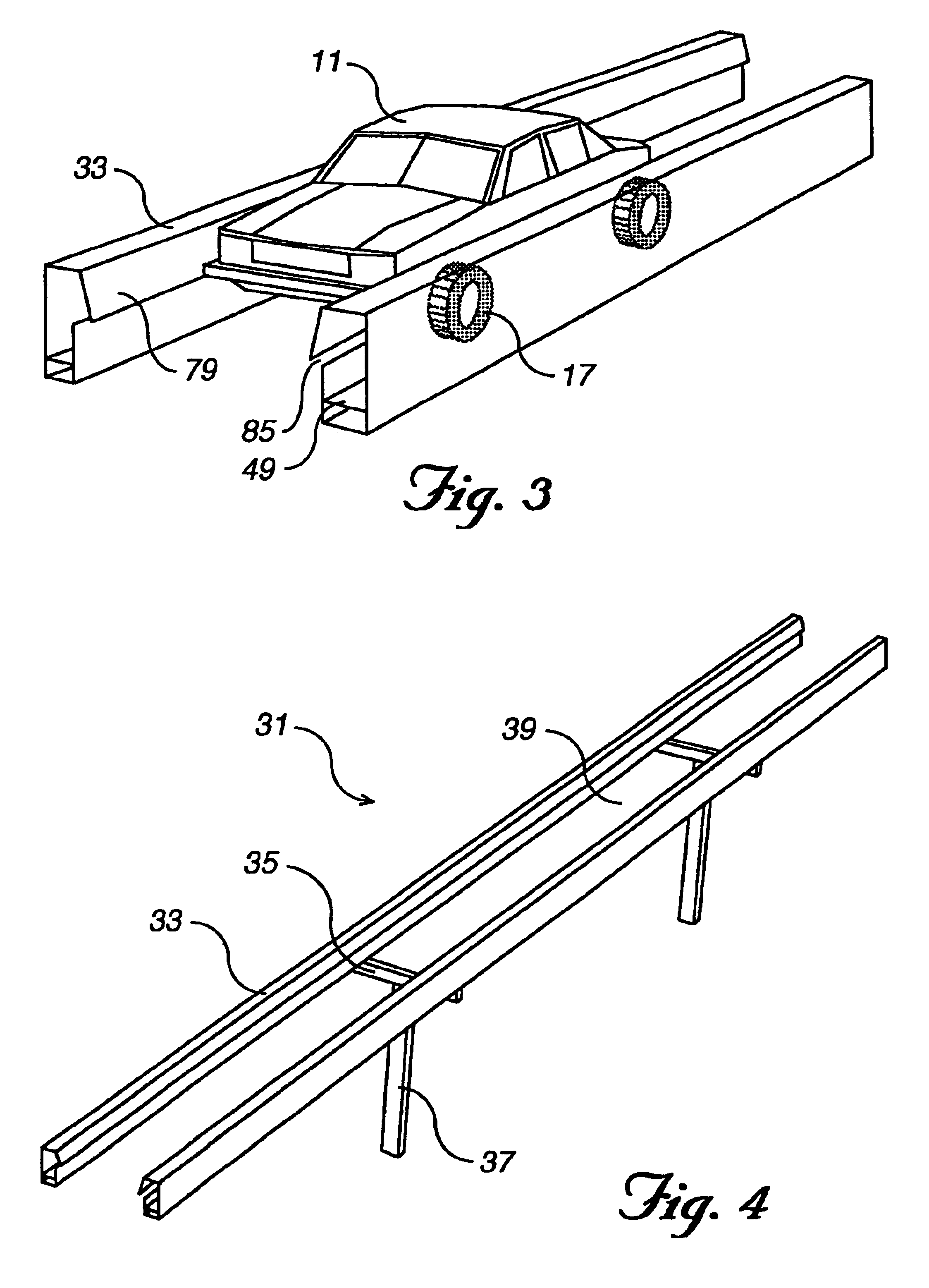Machine for transport of passengers and cargo
a technology for passenger and cargo transportation, applied in the direction of transportation items, rope railways, routes, etc., can solve the problems of inability to provide door-to-door service to passengers and cargo, inability to provide on-demand or scheduled station-to-station service for non-motor vehicle passengers, and inability to use the tracks or guideways
- Summary
- Abstract
- Description
- Claims
- Application Information
AI Technical Summary
Benefits of technology
Problems solved by technology
Method used
Image
Examples
Embodiment Construction
Referring to FIG. 1, a dual-mode vehicle 11 is constructed for use on conventional roads and also for use on an automated guideway system. Vehicle 11 has a body 13 with four wheel wells 15. Wheels 17 are recessed as shown in FIG. 1 for conventional road use. Wheels 17 are extensible to the position shown in FIG. 2 for use on the automated guideway system of this invention.
Referring to FIG. 7, wheels 17 are supported on axles 19. Each axle 19 is extensible from the retracted position shown in FIG. 1 to the extended position shown in FIG. 2. The extension and retraction may be accommodated in several manners. Preferably the mechanism will include telescoping members that are moved between the two positions by hydraulic cylinders (not shown). Also, each axle has a hub end 19a that is offset and higher than a central portion 19b. The axis of rotation of central portion 19b will be located below the axis of rotation of wheel 17 and hub end 19a.
Referring again to FIGS. 1 and 2, vehicle 11...
PUM
 Login to View More
Login to View More Abstract
Description
Claims
Application Information
 Login to View More
Login to View More - R&D
- Intellectual Property
- Life Sciences
- Materials
- Tech Scout
- Unparalleled Data Quality
- Higher Quality Content
- 60% Fewer Hallucinations
Browse by: Latest US Patents, China's latest patents, Technical Efficacy Thesaurus, Application Domain, Technology Topic, Popular Technical Reports.
© 2025 PatSnap. All rights reserved.Legal|Privacy policy|Modern Slavery Act Transparency Statement|Sitemap|About US| Contact US: help@patsnap.com



